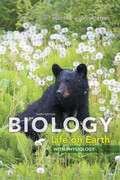
The flipper of a seal is homologous with the _______ of a bird, and both of these are homologous with the _________ of a human. The wing of a bird and the wing of a butterfly are described as __________ structures that arose as a result of _________ evolution. Remnants of structures in animals that have no use for them, such as the small hind leg bones of whales, are described as _________ structures.
To review:
The given blank space in the statement, “the flipper of a seal is homologous with the of a bird, and both of these are homologous with the of a human. The wing of a bird and the wing of a butterfly are described as__________________ structures that arose as a result of evolution. Remnants of structures in animals that have no use for them, such as the small hind leg bones of whales, are described as __________________ structures.”
Introduction:
Convergent evolution may be defined as the development of the same kind of adaptive functional structures in the organisms that are not even related. Such organs are called analogous organs. While the structures in the organisms that have a common ancestry are called homologous organs and the development is named as divergent evolution.
Explanation of Solution
The wings of the birds or the arms of the humans or the flippers of the seals have been evolved from the common ancestor and have a common basic structure. However, according to requirements for the survival, the structures were modified to function in a better way. This evolution is of the divergent type where the function of homologous organs changes in different organisms.
However, the wings of the birds and the insects are different in structures. They do not have a common ancestor as well, but the wings of both the organisms are used for flight. These organs, which are similar to the basis of their function are called analogous organs and the evolution is of convergent type.
When a structure in an organism is not capable of performing the functions that it was destined to do, it turns nonfunctional are such structures are called vestigial structures. These structures had been evolved in the ancestors of the species, but are of no use in the present generations. The examples of vestigial structures are pelvic bones in whales and some snakes, small hind leg bones in whales, and molar teeth in vampire bats.
The flipper of a seal is homologous with the wing of a bird, and both of these are homologous with the arm of a human. The wing of a bird and the wing of a butterfly are described as analogous structures that arose as a result of convergent evolution. Remnants of structures in animals that have no use for them, such as the small hind leg bones of whales, are described as vestigial structures.
Want to see more full solutions like this?
Chapter 14 Solutions
EBK BIOLOGY
- Briefly state the physical meaning of the electrocapillary equation (Lippman equation).arrow_forwardExplain in a small summary how: What genetic information can be obtained from a Punnet square? What genetic information cannot be determined from a Punnet square? Why might a Punnet Square be beneficial to understanding genetics/inheritance?arrow_forwardIn a small summary write down:arrow_forward
- Not part of a graded assignment, from a past midtermarrow_forwardNoggin mutation: The mouse, one of the phenotypic consequences of Noggin mutationis mispatterning of the spinal cord, in the posterior region of the mouse embryo, suchthat in the hindlimb region the more ventral fates are lost, and the dorsal Pax3 domain isexpanded. (this experiment is not in the lectures).a. Hypothesis for why: What would be your hypothesis for why the ventral fatesare lost and dorsal fates expanded? Include in your answer the words notochord,BMP, SHH and either (or both of) surface ectoderm or lateral plate mesodermarrow_forwardNot part of a graded assignment, from a past midtermarrow_forward
 Biology: The Dynamic Science (MindTap Course List)BiologyISBN:9781305389892Author:Peter J. Russell, Paul E. Hertz, Beverly McMillanPublisher:Cengage Learning
Biology: The Dynamic Science (MindTap Course List)BiologyISBN:9781305389892Author:Peter J. Russell, Paul E. Hertz, Beverly McMillanPublisher:Cengage Learning Human Biology (MindTap Course List)BiologyISBN:9781305112100Author:Cecie Starr, Beverly McMillanPublisher:Cengage Learning
Human Biology (MindTap Course List)BiologyISBN:9781305112100Author:Cecie Starr, Beverly McMillanPublisher:Cengage Learning Concepts of BiologyBiologyISBN:9781938168116Author:Samantha Fowler, Rebecca Roush, James WisePublisher:OpenStax College
Concepts of BiologyBiologyISBN:9781938168116Author:Samantha Fowler, Rebecca Roush, James WisePublisher:OpenStax College Biology Today and Tomorrow without Physiology (Mi...BiologyISBN:9781305117396Author:Cecie Starr, Christine Evers, Lisa StarrPublisher:Cengage Learning
Biology Today and Tomorrow without Physiology (Mi...BiologyISBN:9781305117396Author:Cecie Starr, Christine Evers, Lisa StarrPublisher:Cengage Learning Biology (MindTap Course List)BiologyISBN:9781337392938Author:Eldra Solomon, Charles Martin, Diana W. Martin, Linda R. BergPublisher:Cengage Learning
Biology (MindTap Course List)BiologyISBN:9781337392938Author:Eldra Solomon, Charles Martin, Diana W. Martin, Linda R. BergPublisher:Cengage Learning





